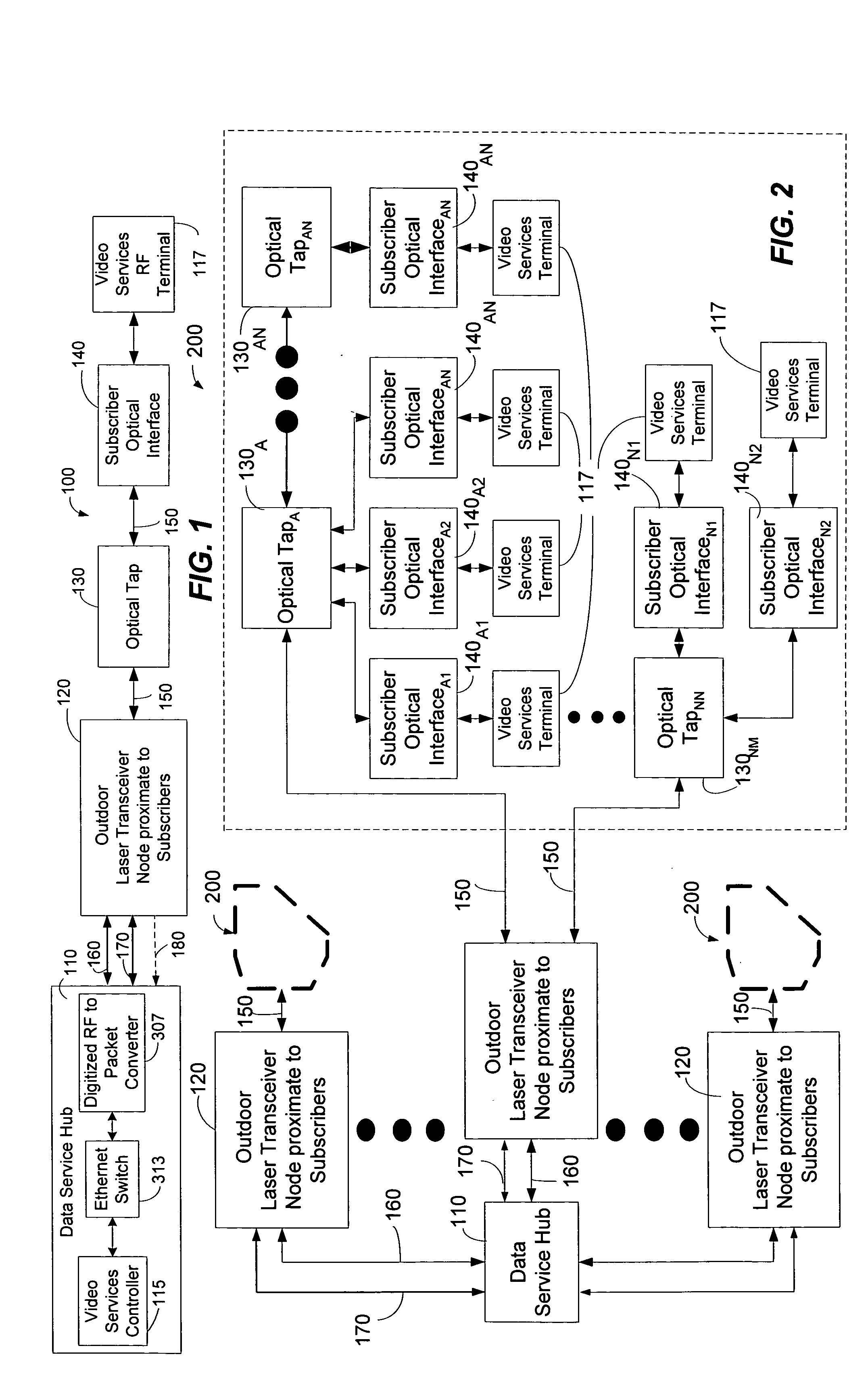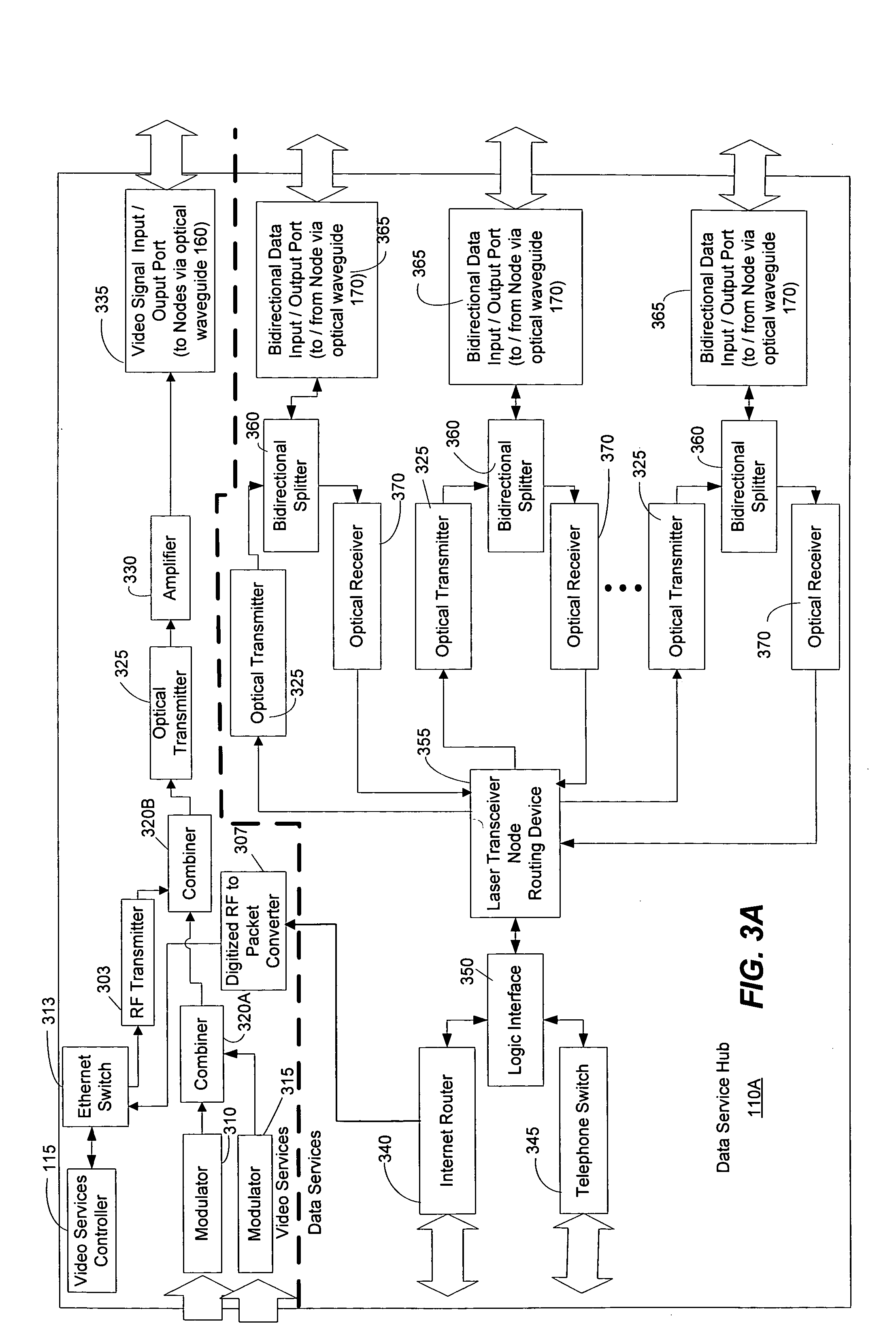Method and system for providing a return path for signals generated by legacy video service terminals in an optical network
a legacy video service terminal and optical network technology, applied in the field of video, voice, data communications, can solve the problems of complex implementation, the inability of conventional ftth systems to support a return path for rf, and the difficulty in implementing the ftth optical network architecture. achieve the effect of speeding up increasing the transmission rate of rf packets
- Summary
- Abstract
- Description
- Claims
- Application Information
AI Technical Summary
Benefits of technology
Problems solved by technology
Method used
Image
Examples
Embodiment Construction
[0057] The present invention may be embodied in hardware or software or a combination thereof disposed within an optical network. In one exemplary embodiment, the present invention provides a method for inserting RF packets between upstream packets comprising data generated by a subscriber with a communication device such as a computer or internet telephone. In this way, the present invention can provide an RF return path for legacy video service terminals that shares a return path for regular data packets in an optical network architecture. Video service terminals (VSTs) can comprise set top terminals or other like communication devices that may employ RF carriers to transmit upstream information.
[0058] According to one exemplary embodiment, a data service hub or what is usually referred to as a head-end in industry, may comprise a digitized-RF-to-packet-converter (DRPC) that demodulates received upstream, return RF packets into standard packets such as Ethernet packets. These Eth...
PUM
 Login to View More
Login to View More Abstract
Description
Claims
Application Information
 Login to View More
Login to View More - R&D
- Intellectual Property
- Life Sciences
- Materials
- Tech Scout
- Unparalleled Data Quality
- Higher Quality Content
- 60% Fewer Hallucinations
Browse by: Latest US Patents, China's latest patents, Technical Efficacy Thesaurus, Application Domain, Technology Topic, Popular Technical Reports.
© 2025 PatSnap. All rights reserved.Legal|Privacy policy|Modern Slavery Act Transparency Statement|Sitemap|About US| Contact US: help@patsnap.com



